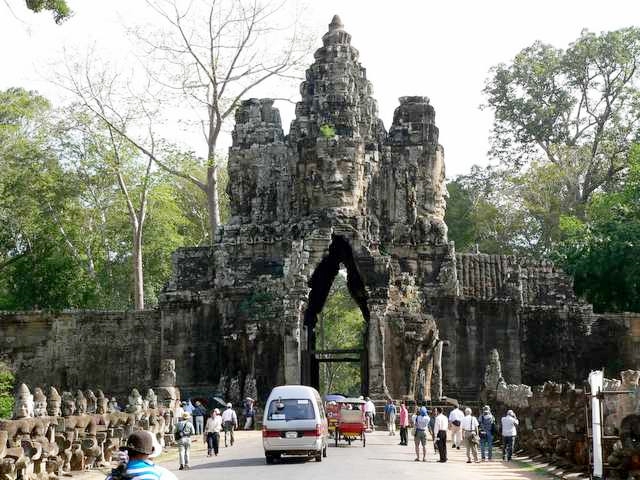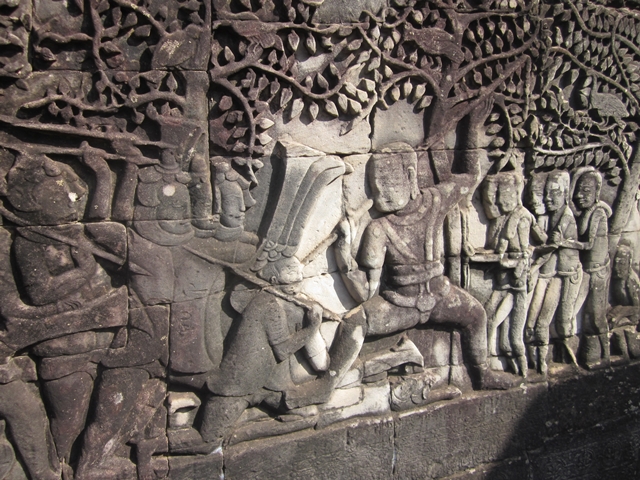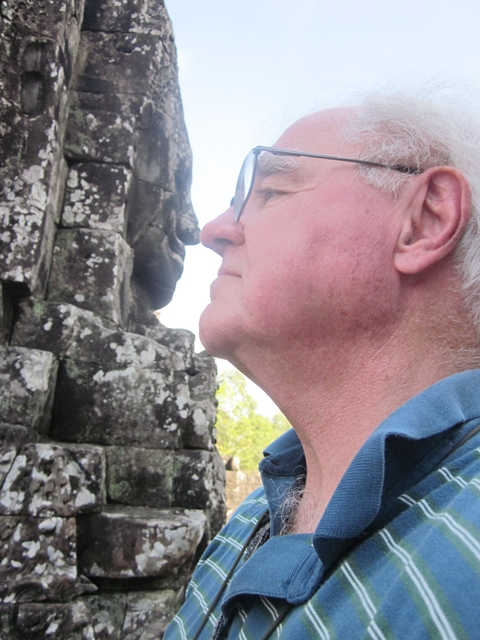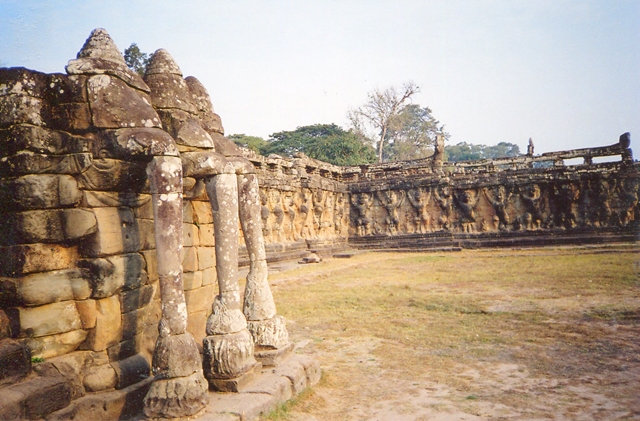Southeast Asia with Peter – Day 16
This morning we visit the Bayon temple through the south gate of Angkor Thom. We had our choice of transport..I thought an elephant ride would be nice, but I think the elephants might have been a bit too heavy for me,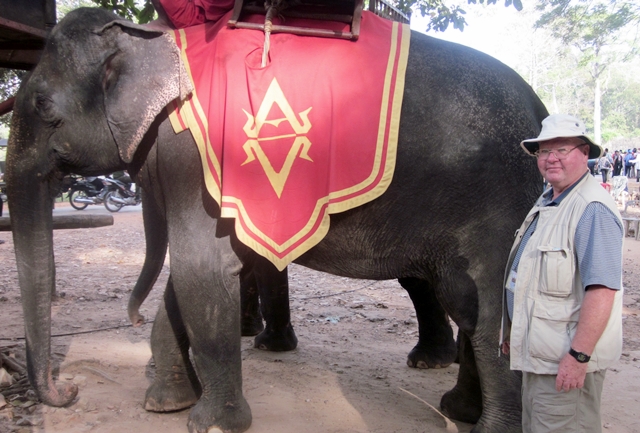 Instead, we walked across the bridge and through the south gate.
Instead, we walked across the bridge and through the south gate.
Along the bridge were sculptured heads. Pete and I did some mugging: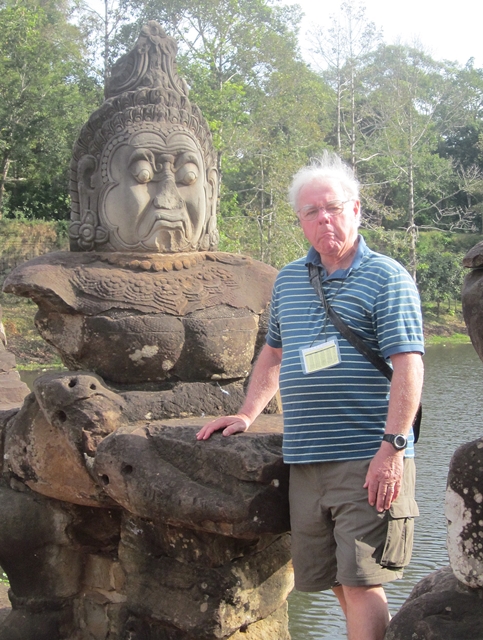
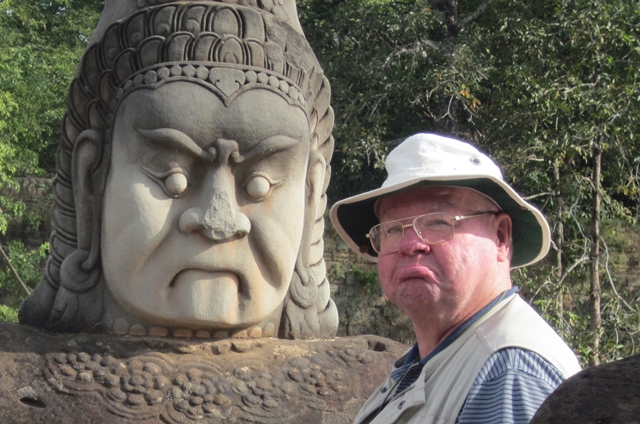 Before we toured the Bayon temple, Rath gave us a course in ancient stone cutting. These temples a 800 to 1000 years old and there was some clever work done:
Before we toured the Bayon temple, Rath gave us a course in ancient stone cutting. These temples a 800 to 1000 years old and there was some clever work done:  Sandstone blocks were fitted together by scraping them back and forth against each other using a hoist and a swinging motion.
Sandstone blocks were fitted together by scraping them back and forth against each other using a hoist and a swinging motion.
 Fitted stones were then carved. Any holes from the fitting were smoothly filled. The stones were then put in place in the temple.
Fitted stones were then carved. Any holes from the fitting were smoothly filled. The stones were then put in place in the temple. 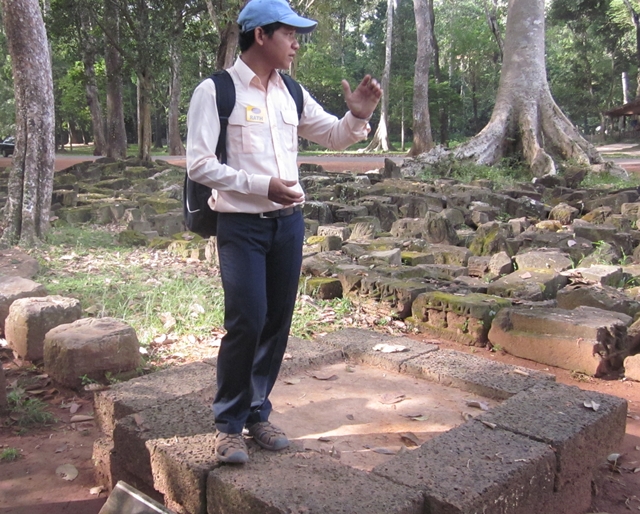 Rath is standing on a block of laterite. When moist, laterites can be easily cut with a spade into regular-sized blocks. Laterite is mined while it is below the water table, so it is wet and soft. Upon exposure to air it gradually hardens as the moisture between the flat clay particles evaporates and the larger iron salts lock into a rigid lattice structure and become resistant to atmospheric conditions Historically, laterite was cut into brick-like shapes and used in monument building. After 1000 AD construction at Angkor Wat and other southeast Asian sites changed to rectangular temple enclosures made of laterite, brick and stone.
Rath is standing on a block of laterite. When moist, laterites can be easily cut with a spade into regular-sized blocks. Laterite is mined while it is below the water table, so it is wet and soft. Upon exposure to air it gradually hardens as the moisture between the flat clay particles evaporates and the larger iron salts lock into a rigid lattice structure and become resistant to atmospheric conditions Historically, laterite was cut into brick-like shapes and used in monument building. After 1000 AD construction at Angkor Wat and other southeast Asian sites changed to rectangular temple enclosures made of laterite, brick and stone.
We’ll see how this was done later.
 This was our first view of the Bayon temple.
This was our first view of the Bayon temple.
We weren’t the only ones here. There was a troop of monkeys following us: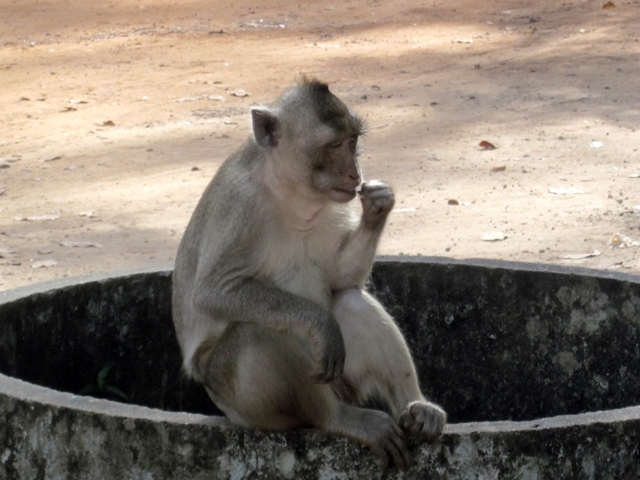

We entered the temple and walked around inside. You could walk anywhere.

These are “Face Towers” They are featured on the front cover of the latest OAT trip catalog. The construction plan of Bayon is complicated and seems still in the mystery, especially the four face towers. Many various conclusions from many scholars about the meaning of this towers. Mostly said that the four face towers represent Buddha .
The construction plan of Bayon is complicated and seems still in the mystery, especially the four face towers. Many various conclusions from many scholars about the meaning of this towers. Mostly said that the four face towers represent Buddha .
Bayon temple was built with three separate levels, the first and second levels contain galleries featuring bas-reliefs. At the third level there are a series of chambers with towers at each corner. The area is somehow confusing due to passageways being walled up, it’s like walking in a maze.
There were actors representing the Apsara dancers pitcured on temple carvings. Thet would pose with you for a donation: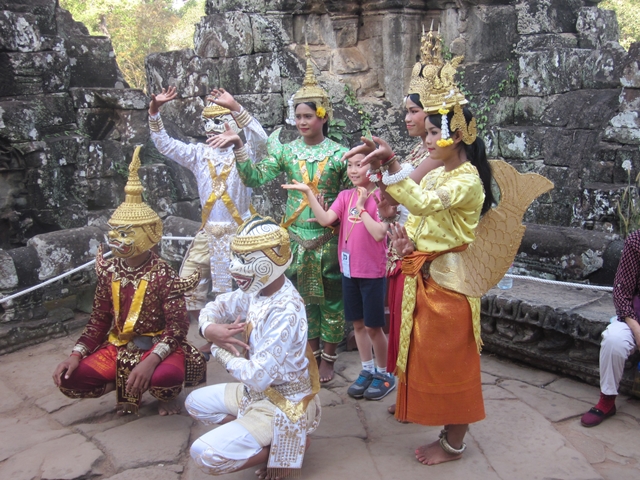
 Ole had some camera fun setting up Pete and I ” nose-to-nose” with a tower face. We had similar smirks:
Ole had some camera fun setting up Pete and I ” nose-to-nose” with a tower face. We had similar smirks:
We finally found our way out of the Bayon temple and moved on.
We stopped for a photo op at the “Elephant Terrace”. This terrace and The Terrace of the Leper King (this name is due to a statue being reminiscent of a Khmer legend of an Angkorian king who had leprosy) are within the grounds of Angkor Thom, and are not Angkor temples, but rather remaining features of the ancient city walls of Angkor Thom. Elephant Terrace is a formidable 1000 foot complex, which was the foundation for royal reception pavilions
Our next Temple stop was at Ta Promh temple aka “The Jungle Temple”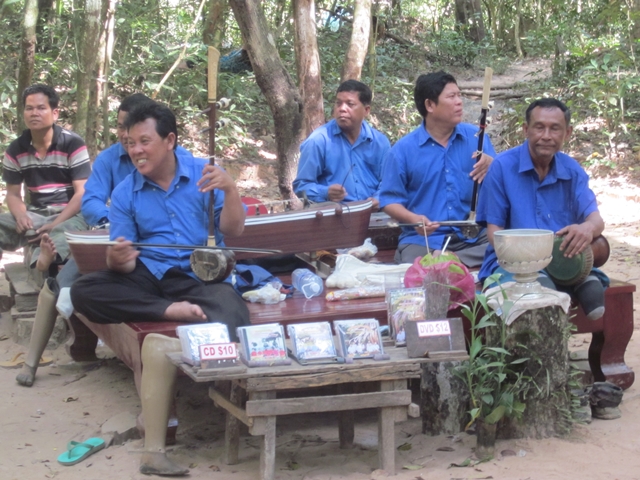 On our way there we passed this group of musicians playing traditional Cambodian music. If you look closely, you’ll note that several have missing limbs. This is the result of accidents with unexploded US bombs. Not nice!
On our way there we passed this group of musicians playing traditional Cambodian music. If you look closely, you’ll note that several have missing limbs. This is the result of accidents with unexploded US bombs. Not nice!
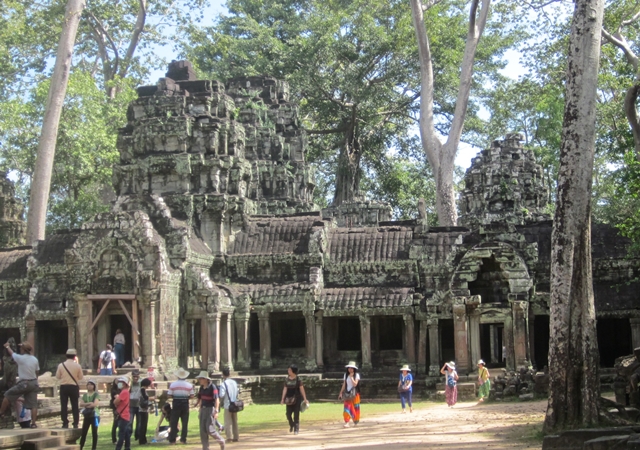 Here is the Jungle Temple. The temple is noted for it’s huge trees growing and engulfing the structure. You may also know it as the temple in the “Laura Croft – Tomb Raider” movie. Some pics of the trees and roots are below:
Here is the Jungle Temple. The temple is noted for it’s huge trees growing and engulfing the structure. You may also know it as the temple in the “Laura Croft – Tomb Raider” movie. Some pics of the trees and roots are below:
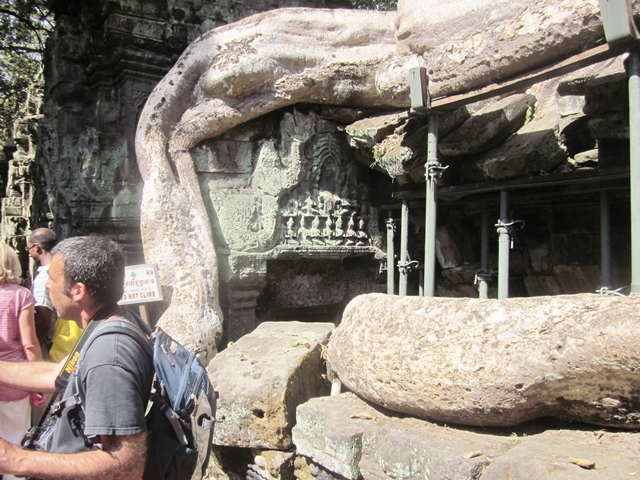


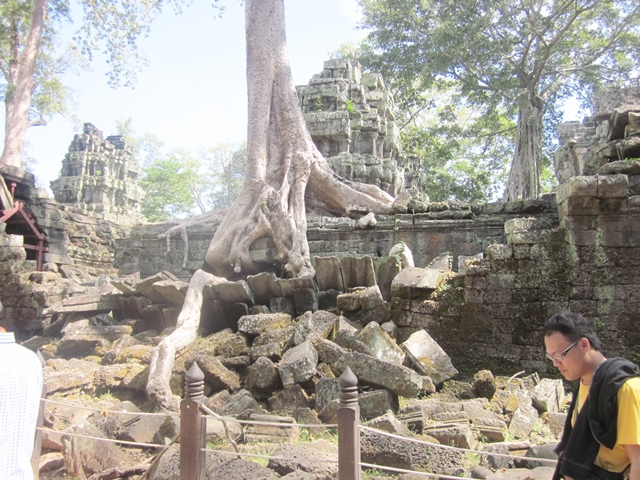 It’s pretty amazing how the trees have grown in and around the structures. They can’t be removed now because, in most cases, the trees are holding up the structure! Note, however, the building blocks that have fallen.
It’s pretty amazing how the trees have grown in and around the structures. They can’t be removed now because, in most cases, the trees are holding up the structure! Note, however, the building blocks that have fallen.
It was lunch time so we left Angkor Thom and went to the Bayon restaurant.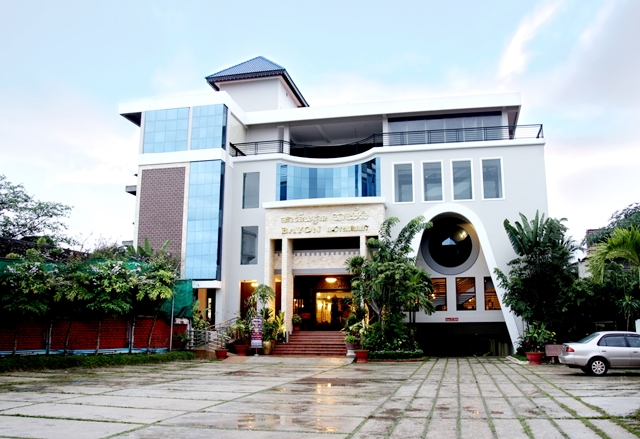
 A typical lunch. All the Cambodian we had food was great!!!
A typical lunch. All the Cambodian we had food was great!!!

